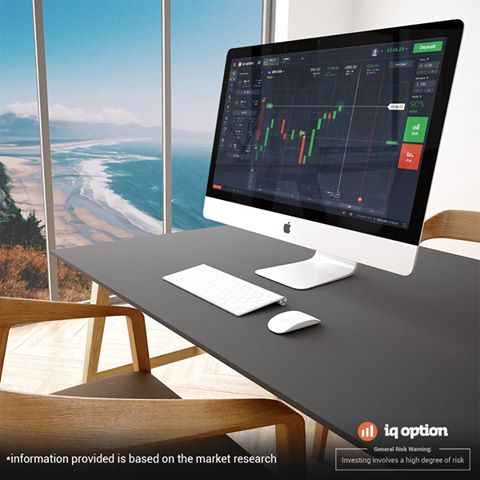How to Trade Binary Options Successfully?
An option, as a financial instrument, has been used to carry out transactions since the mid-twentieth century, but only in the recent years has the development of internet technologies made it possible to significantly democratize the options market: individuals have become able to trade option contracts using the so-called digital or binary options (in the US they are also called FRO, Fixed Return Options, which means ‘fixed-income options’). A binary option is a specific case of the standard option contract which is structured so that the potential profits and potential losses are known in advance. This allows to significantly speed up the decision making process, and also simplifies the process of risk management on the part of the trader.
Each option contract has an underlying asset – a share, an index, or a currency pair, the price movement of which determines the outcome of the trade, as well as an expiration date – a pre-fixed time after which the outcome (profit or loss) is determined.
Let us look at an example. Let’s say a trader buys a 15-minute option on price increase (also referred to as a ‘call’) for $100, where the underlying asset is gold. Let’s also assume that the stated profitability of this option is 90%, and at the time of the purchase of the option the price of gold was $1,100 per ounce. If after 15 minutes the price of gold is more than $1,100 per ounce, the option ‘expires in the money’ (as traders call it), i.e., is profitable, the trader will get back $190 for her $100 investment. If the gold price is lower than it was initially, the option is ‘out of the money’, i.e. the trader will get $0 (most brokers offer a 5-15% recovery rate for unsuccessful trades). If a trader buys an option that bets on a decline in price (the so-called ‘put’), the situation is the opposite – the option will be profitable if the price of gold falls, i.e. its price at closing is less than $1,100 per ounce.
Why is it becoming popular?
Binary options have a number of peculiarities that make them appealing to private traders, and especially so for novice traders.
Simplified risk management
Since each deal only has two possible outcomes, both of which are predetermined, the trader has the opportunity to focus on choosing the right market conditions and suitable entry points instead of wasting time on complex calculations to evaluate the risk.
A possibility to make a profit off a falling market
At any given time, it is possible to acquire an option on the growth or decline of any of the available asset prices. This means that one can make a profit given in any market conditions. This fact doubles the range of possible strategies in the case of options on shares, indices and raw materials: in the classical markets betting on stock price declines (so-called short positions) is quite expensive and is often not available at all to private traders.
Lack of spreads in transactions
In the forex market and other classical instruments, a significant part of the income of the trader can be destroyed by both direct and hidden commissions (spreads); in the case of binary options, a broker earns from the difference in yield option in the case of wins and losses, i.e. there are no hidden fees in any of the transactions.
7 steps towards profitable trades
1). Get rid of emotions: On Wall Street they say that ‘the markets are driven by fear and greed’; keeping these emotions under control will increase your chances of making a stable profit.
2). Follow a clear strategy: Find your own trading style and put together a (written) list of rules which you will follow when choosing an asset and opening a trade.
3). Discipline, discipline, discipline: Financial markets do not forgive laziness. Trading requires having high resistance to stress and a clear understanding that things will not always go your way, especially at the beginning.
4). Risk management: Do not use more than 10% of your deposit in a single trade. It is better to have a stable strategy and earn little by little than to win a large amount of money out of sheer luck. Luck does not have a tendency to last.
5). Take baby steps: In our experience, it is much better to start with small but real sums of money. Learning to trade by using a demo account will teach you about trading as much as moving your arms and legs on the floor next to the pool will teach you about swimming.
6). Choose the right broker: Approach the choice of a broker as you would approach the choice of your primary business partner. Your trading success will heavily depend on your broker’s reliability and the features that they offer.
7). Never stop learning: Keep analysing your actions and learn from your mistakes. Constantly improve your knowledge of the subject, and turn it into money through profitable trades.
How to choose the right trading strategy?
Many novice traders think that a profitable trading strategy is the only important factor in successful trading. A lot of them also think that this has to be some sort of an ‘super-strategy that works in 99.99% of cases.’ In reality, however, the choice of a trading strategy is, of course, a very important, but not the only critical aspect; discipline and emotional control are as important. Experienced traders consider a strategy to be successful if the winnings exceed the losses by 5-10%, and stable results are considered to be much more valuable than one-time (and often accidental) profit.
Another popular misconception is that only complex strategies are the ones that can bring significant profits. In fact, it is usually the other way around. The simpler the principle behind the strategy, the more likely it reflects the real factors that influence market prices.
Support and resistance
One of the universal principles underlying a great number of famous strategies is the notion of support and resistance. Support stands for the price level below which a price is not able to fall after two or more “attempts”. The resistance level lies where the price stops rising following two or more “attempts”; i.e. it is the “ceiling” that the price hits when it cannot go up any more. Where to these levels come from?
The main rationale behind support and resistance lies within the collective action of market participants, which can be explained by the following example: if the price of an asset, moving up, could not overcome a certain level at first approach, then during the second approach to this level two forces will be conflicting: the movement in the same direction (i.e. up towards the breakthrough level) under the pressure of the current trend, and the movement back down under the influence of the belief that the price of the asset did not break the level the previous time because it should not be higher, otherwise the asset will be overvalued. In case the price does not rise beyond the previous high-point for the second time, it can be said that a resistance level has been confirmed.
Now, for the interesting part – waiting for the right entry point (since options have a fixed “life expectancy”, one does not need to worry about the exit point). One should usually be entering a “short” trade (i.e. activating a “sell” option) when a resistance level has been confirmed, i.e. when the price cannot go higher than a certain level two (or more) times in a row.
Trading at the support levels follows the same logic, with the directions of the prices and the trades inverted compared to the above example.
The above examples are simple in their essence, but at the same time, they are very powerful basic strategies in developing effective trading skills. The principle of support and resistance levels is the foundation upon which you can build a variety of strategies, such as using the slanted lines of support / resistance or a combination of both support and resistance in the so-called ‘trading corridor’, i.e. the space between the support and resistance levels within which the price fluctuates for a certain time. The trade corridor strategy is convenient because it allows the use of both up and down trades, giving more opportunities for high-performance entry points.
Choosing a reliable brokerage company
As mentioned above, another important success factor is the choice of the right broker. Below are a number of criteria which one should bear in mind when looking for one:
- Is the broker regulated? A regulating body ensures the safety of funds and will save you a lot of grey hairs. Preferably, the overseeing organization should be located within the EU borders.
- Is the trading platform comfortable? An uncomfortable, slow, and unreliable trading platform can void the benefits of your trading strategies and transform a favorable market situation into a loss.
- Is there a customer support service? Any serious broker should have a specialized support team that is available 24/7 and can be accessed through at least three channels: via a live chat on the broker’s website or within the trading platform, on the phone, and by email.
- Does the broker have awards? The company that participates and receives awards on industry exhibitions is also more likely to turn out to be reliable and to provide high quality services.
- Does the broker provide training? If a broker does not offer high-quality, free learning materials, you can wonder if it is interested in your long-term success as its client.
- Is it easy to deposit and withdraw funds? You should make sure that your broker supports your preferred methods of depositing and withdrawing, and that both procedures are fast and efficient.
If you use the ‘filters’ above to analyze the brokerage industry, you should be able to single out a relatively small number of truly high-profile brokers.



